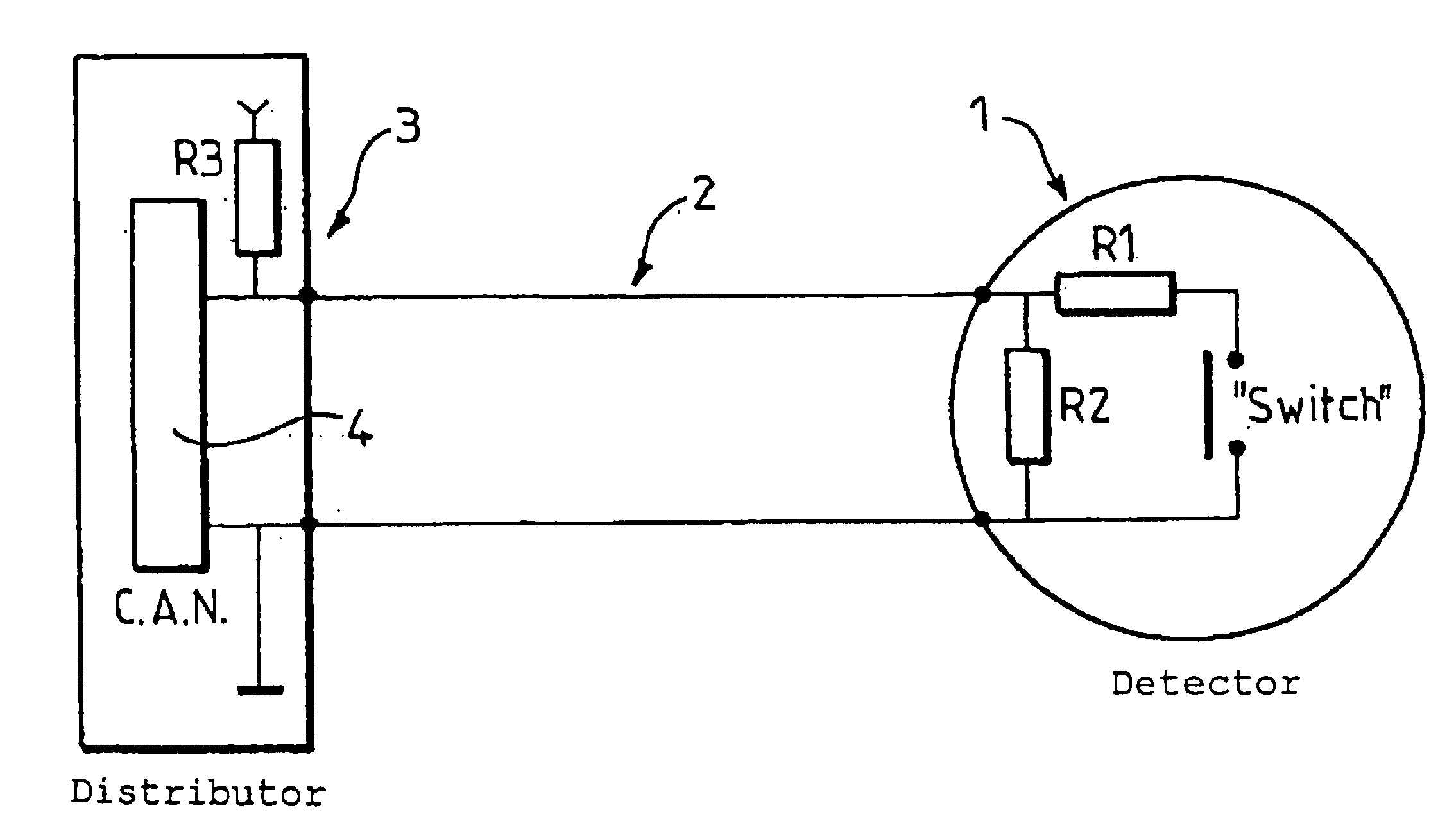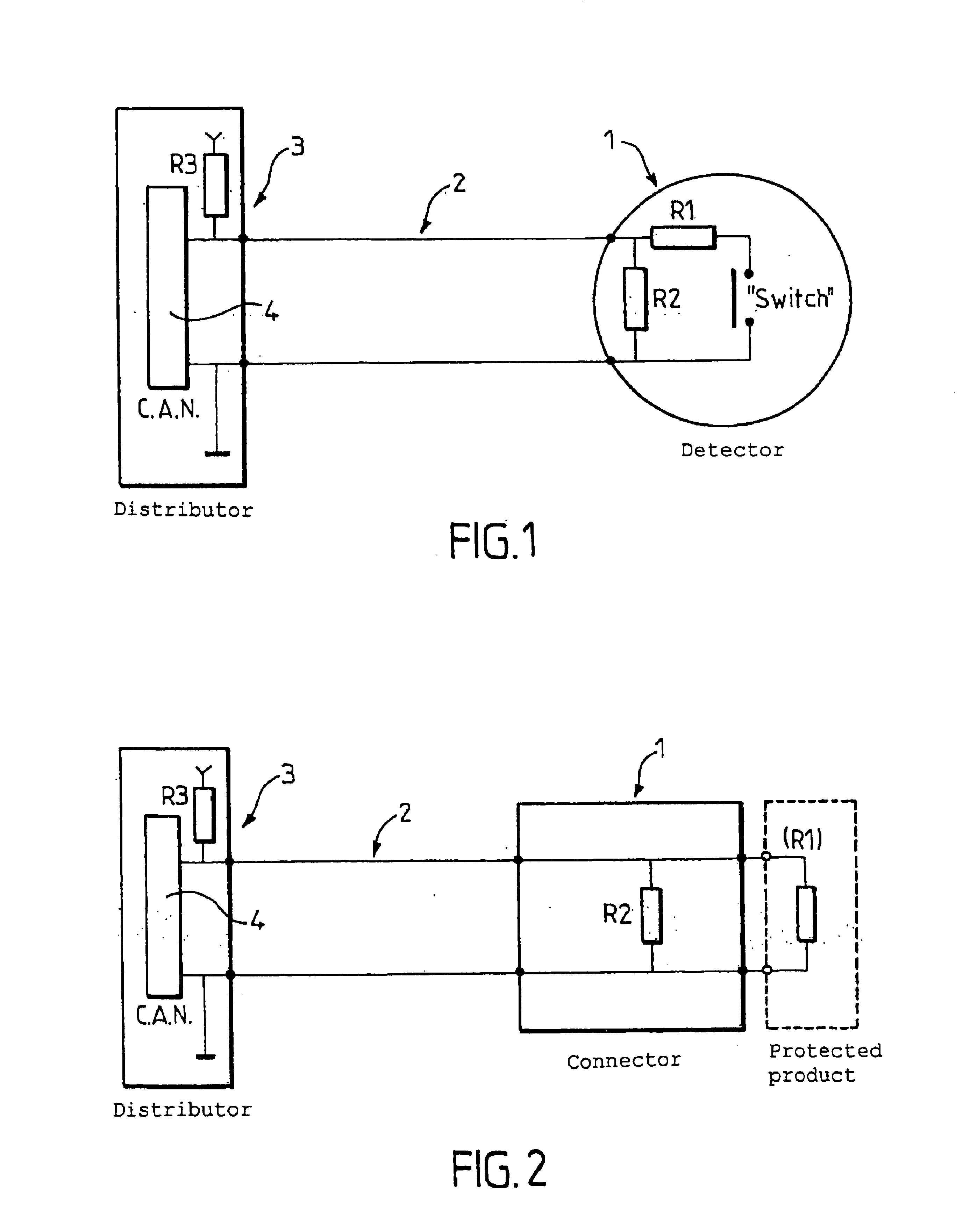Wire-based safety device for the detection of the theft of an object to be protected and operating method
a safety device and wire-based technology, applied in the field of wire-based safety devices, can solve the problems of fraud, inability to determine the presence of the detector, and cost of 4-wire protection, so as to reduce the number of false triggerings, improve the safety level, and reduce the cost
- Summary
- Abstract
- Description
- Claims
- Application Information
AI Technical Summary
Benefits of technology
Problems solved by technology
Method used
Image
Examples
Embodiment Construction
FIG. 1 corresponds to a circuit with a unit or distributor comprising an analogue digital converter, or ADC, connected by a two-wire link to a passive detector which comprises a sensor which is a switch. The first wire connects the ground of the ADC to one of the contacts of the switch (<<switch >>), the second wire, via a resistor R1, connects the input of the converter to the other contact of the switch. The arrangement of the switch in series with R1 may be reverted with respect to the ground wire. Between both linking wires lies a resistor R2. The input of the converter possesses a resistor R3 for bringing back to the reference potential produced by a voltage generator and intended to form a dividing bridge with the assembly (R1+switch in series) / / R2, situated in the detector. Such a configuration enables the detection of the presence / absence of the object and of the presence / absence of the detector.
In other words, on FIG. 1, the detector 1 comprises a switch and a res...
PUM
 Login to View More
Login to View More Abstract
Description
Claims
Application Information
 Login to View More
Login to View More - R&D
- Intellectual Property
- Life Sciences
- Materials
- Tech Scout
- Unparalleled Data Quality
- Higher Quality Content
- 60% Fewer Hallucinations
Browse by: Latest US Patents, China's latest patents, Technical Efficacy Thesaurus, Application Domain, Technology Topic, Popular Technical Reports.
© 2025 PatSnap. All rights reserved.Legal|Privacy policy|Modern Slavery Act Transparency Statement|Sitemap|About US| Contact US: help@patsnap.com



